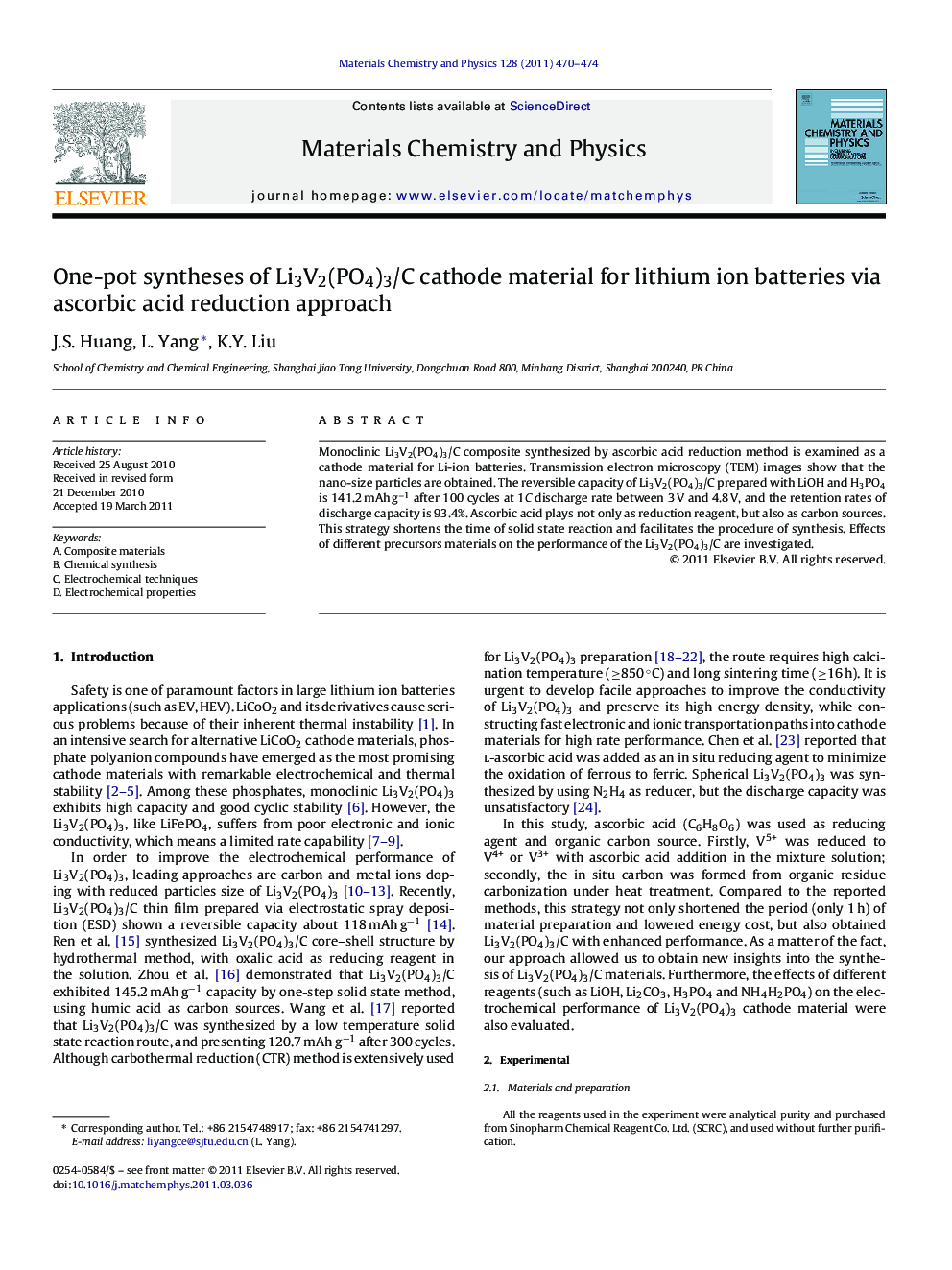| Article ID | Journal | Published Year | Pages | File Type |
|---|---|---|---|---|
| 1524897 | Materials Chemistry and Physics | 2011 | 5 Pages |
Monoclinic Li3V2(PO4)3/C composite synthesized by ascorbic acid reduction method is examined as a cathode material for Li-ion batteries. Transmission electron microscopy (TEM) images show that the nano-size particles are obtained. The reversible capacity of Li3V2(PO4)3/C prepared with LiOH and H3PO4 is 141.2 mAh g−1 after 100 cycles at 1C discharge rate between 3 V and 4.8 V, and the retention rates of discharge capacity is 93.4%. Ascorbic acid plays not only as reduction reagent, but also as carbon sources. This strategy shortens the time of solid state reaction and facilitates the procedure of synthesis. Effects of different precursors materials on the performance of the Li3V2(PO4)3/C are investigated.
► Ascorbic acid (C6H8O6) was used as reducing agent and organic carbon source. ► The strategy shortened the period of material preparation and lowered energy cost. ► Li3V2(PO4)3/C was obtained with enhanced electrochemical performance. ► Effects of reagents on electrochemical performance of Li3V2(PO4)3 were evaluated.
